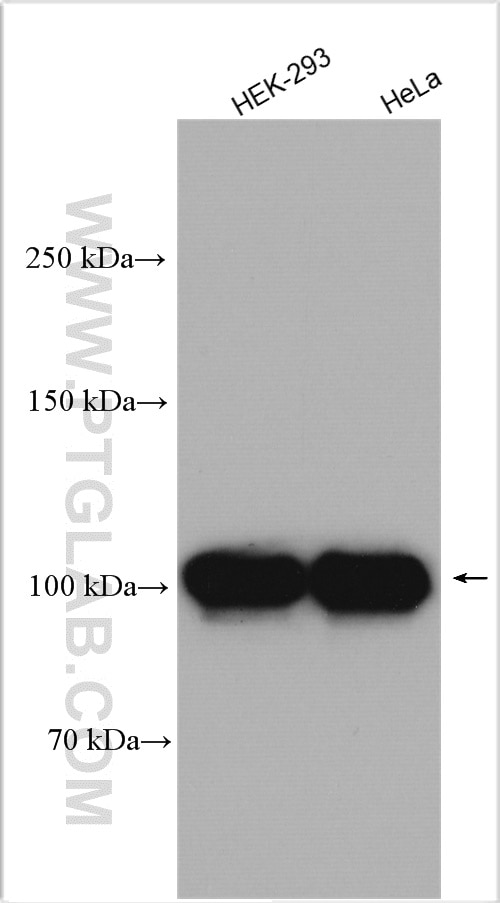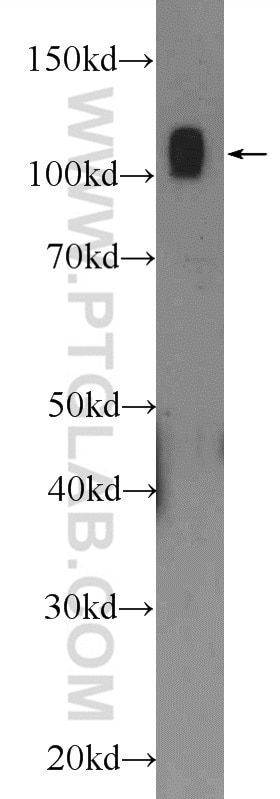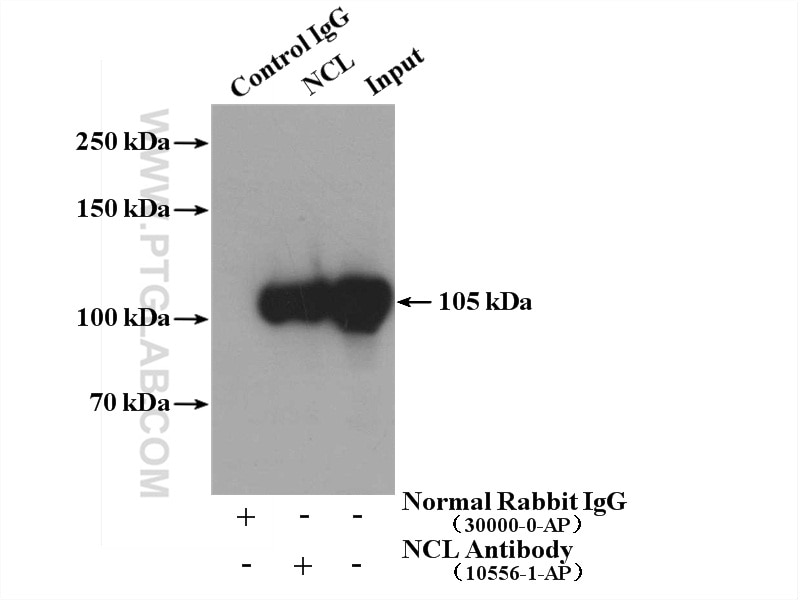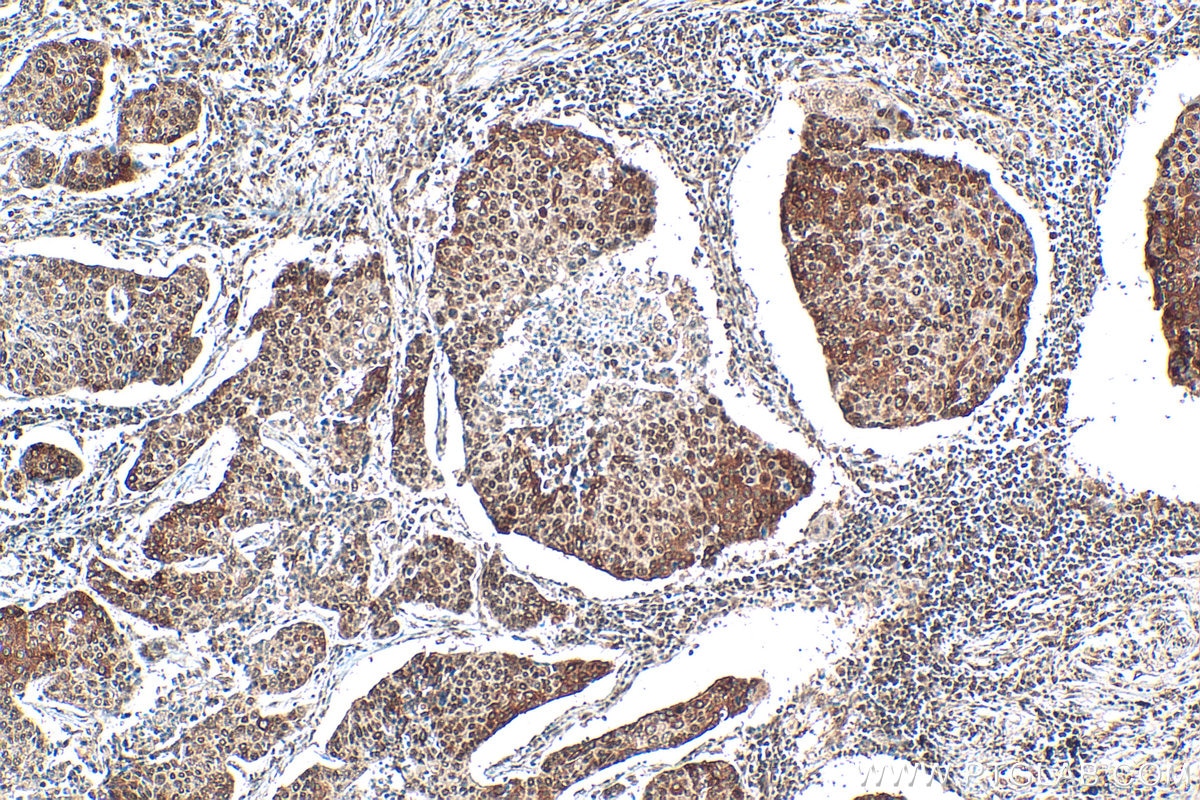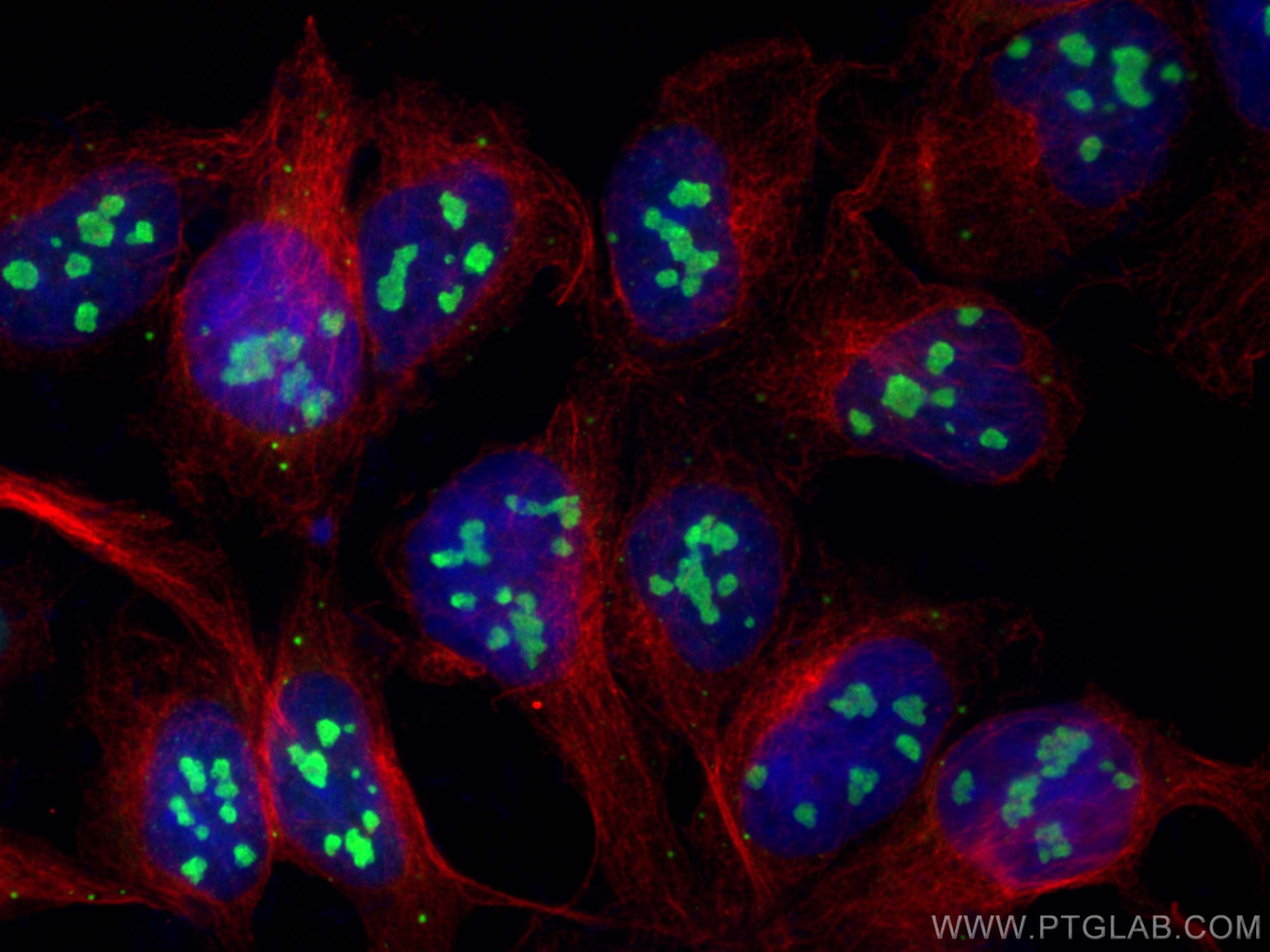- Phare
- Validé par KD/KO
Anticorps Polyclonal de lapin anti-Nucleolin/C23
Nucleolin/C23 Polyclonal Antibody for WB, IHC, IF/ICC, IP, ELISA
Hôte / Isotype
Lapin / IgG
Réactivité testée
Humain, rat, souris et plus (1)
Applications
WB, IHC, IF/ICC, IP, CoIP, RIP, ELISA
Conjugaison
Non conjugué
N° de cat : 10556-1-AP
Synonymes
Galerie de données de validation
Applications testées
| Résultats positifs en WB | cellules HEK-293, cellules HeLa, tissu cérébral de rat |
| Résultats positifs en IP | cellules HeLa |
| Résultats positifs en IHC | tissu de cancer du poumon humain, il est suggéré de démasquer l'antigène avec un tampon de TE buffer pH 9.0; (*) À défaut, 'le démasquage de l'antigène peut être 'effectué avec un tampon citrate pH 6,0. |
| Résultats positifs en IF/ICC | cellules HEK-293 |
Dilution recommandée
| Application | Dilution |
|---|---|
| Western Blot (WB) | WB : 1:5000-1:50000 |
| Immunoprécipitation (IP) | IP : 0.5-4.0 ug for 1.0-3.0 mg of total protein lysate |
| Immunohistochimie (IHC) | IHC : 1:50-1:500 |
| Immunofluorescence (IF)/ICC | IF/ICC : 1:500-1:1500 |
| It is recommended that this reagent should be titrated in each testing system to obtain optimal results. | |
| Sample-dependent, check data in validation data gallery | |
Informations sur le produit
10556-1-AP cible Nucleolin/C23 dans les applications de WB, IHC, IF/ICC, IP, CoIP, RIP, ELISA et montre une réactivité avec des échantillons Humain, rat, souris
| Réactivité | Humain, rat, souris |
| Réactivité citée | rat, Humain, porc, souris |
| Hôte / Isotype | Lapin / IgG |
| Clonalité | Polyclonal |
| Type | Anticorps |
| Immunogène | Nucleolin/C23 Protéine recombinante Ag0859 |
| Nom complet | nucleolin |
| Masse moléculaire calculée | 76 kDa |
| Poids moléculaire observé | 100-110 kDa |
| Numéro d’acquisition GenBank | BC006494 |
| Symbole du gène | NCL |
| Identification du gène (NCBI) | 4691 |
| Conjugaison | Non conjugué |
| Forme | Liquide |
| Méthode de purification | Purification par affinité contre l'antigène |
| Tampon de stockage | PBS with 0.02% sodium azide and 50% glycerol |
| Conditions de stockage | Stocker à -20°C. Stable pendant un an après l'expédition. L'aliquotage n'est pas nécessaire pour le stockage à -20oC Les 20ul contiennent 0,1% de BSA. |
Informations générales
Nucleolin, also known as C23, involved in the control of transcription of ribosomal RNA (rRNA) genes by RNA polymerase I, in nucleocytoplasmic transportation of ribosomal components, and in ribosome maturation and assembly. It associated with intranucleolar chromatin and pre-ribosomal particles, and induced chromatin decondensation by binding to histione H1. Also it has a role in the process of transcriptional elongation. Whilst mammalian nucleolin has a predicted molecular mass of approximately 77 kDa, the apparent molecular mass is between 100 and 110 kDa, and has been attributed to the amino acid composition of the N-terminal domain, which is highly phosphorylated. (PMID: 15925566)
Protocole
| Product Specific Protocols | |
|---|---|
| WB protocol for Nucleolin/C23 antibody 10556-1-AP | Download protocol |
| IHC protocol for Nucleolin/C23 antibody 10556-1-AP | Download protocol |
| IF protocol for Nucleolin/C23 antibody 10556-1-AP | Download protocol |
| IP protocol for Nucleolin/C23 antibody 10556-1-AP | Download protocol |
| Standard Protocols | |
|---|---|
| Click here to view our Standard Protocols |
Publications
| Species | Application | Title |
|---|---|---|
Mol Cell Aberrant phase separation drives membranous organelle remodeling and tumorigenesis | ||
Neuron Antisense Proline-Arginine RAN Dipeptides Linked to C9ORF72-ALS/FTD Form Toxic Nuclear Aggregates that Initiate In Vitro and In Vivo Neuronal Death. | ||
Genome Res The nuclear matrix protein HNRNPU maintains 3D genome architecture globally in mouse hepatocytes. | ||
Clin Transl Med LncRNA BC promotes lung adenocarcinoma progression by modulating IMPAD1 alternative splicing
| ||
Protein Cell Nuclear m6A reader YTHDC1 regulates the scaffold function of LINE1 RNA in mouse ESCs and early embryos. |
Avis
The reviews below have been submitted by verified Proteintech customers who received an incentive for providing their feedback.
FH Kyosuke (Verified Customer) (06-12-2019) | It works well on HEK293T for Western blot.
|
